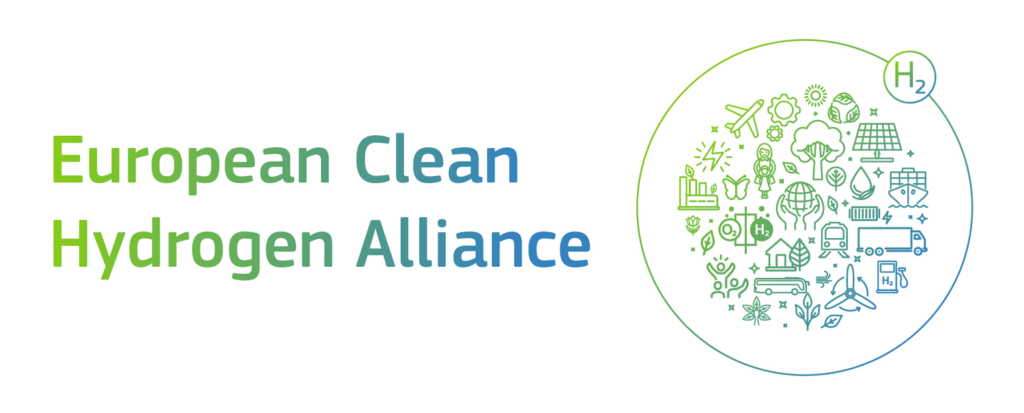Hydrogen and Renewable Energies
Hydrogen is a very versatile and non-polluting energy carrier: its use produces only water. It is also very light and has an extremely high gravimetric energy density. Green hydrogen is a “game changer” for decarbonization. Wolftank Group provides long-standing expertise, invests in R&D and builds the necessary hydrogen infrastructure for an emission-free future.
Turnkey components and assemblies for the construction and planning of hydrogen service stations
Mobile storage containers for decentralized hydrogen distribution
Energy solutions for emergency electricity supply via fuel cell systems
Stand-alone solutions with fuel cell systems
Hydrogen production from renewable sources
Upgrades for existing natural gas pipelines for the transportation of hydrogen
years experience on H2
Countries currently served by our H2 business area
H2 sites with our softwares
turnkey project management solutions throughout Europe
of H2 safely refilled into vehicles in approx. 25,000 single H2 refueling operations
refueling event performed last year
Technologies and solutions
Hydrogen to Electricity
Hydrogen refueling
Hydrogen distribution and infrastructure
Wolftank H2 Transport Container
Wolftank H2 Transport Container is an innovative mobile solution ideal for an efficient hydrogen supply, specially for short and medium distances.
TPED certified (Transportable Pressure Equipment), it has 300 bar or 500 bar versions. This innovative solution provides energy and time-saving during the filling and emptying processes. It enables ecologically sustainable hydrogen distribution and it can be transported by any authorized logistic provider. ADR and ISO 10961.2020.
H22E PowerCube
Hydrogen 2E PowerCube is the ideal solution to provide high quantity of electrical energy in short time at decentralised places. Hydrogen obtained from a local renewable energy source is converted into electricity via the Wolftank Hydrogen 2E PowerCube. This stage-of-the-art system can supply electricity to cars, trucks and buses and can be applied for fast charging of BEV in areas with insufficient electric infrastructure, as an energy generator for construction sites and events or as an emergency back-up system.
Wolftank H2 Dispenser
Wolftank Hydrogen Smart Fueller (HSF) is a safe and reliable refuelling system for all kinds of fuel cell electric vehicles (FCEV).
This stand-alone unit is an affordable solution for hydrogen dispensing and is offered in multiple variations for 350 bar and 700 bar. It has a remarkable layout for easy and safe handling of the dispenser. TÜV certified. It implements all state-of-the-art refuelling protocols (e.g., SAE® J2601, JPEC, etc.).
350bar: standard
Wolftank Hydrogen Smart Container (HSC) is a durable mobile hydrogen station that refuels all common vehicle types anywhere and under the most adverse circumstances.
- List Item #1
- List Item #1
- List Item #1
700bar: standard
Wolftank Hydrogen Smart Container (HSC) is a durable mobile hydrogen station that refuels all common vehicle types anywhere and under the most adverse circumstances.
- List Item #1
- List Item #1
- List Item #1
Wolftank H2 Mobile Station
The Wolftank H2 Mobile Station is a durable mobile hydrogen station that refuels all common vehicle types anywhere and under the most adverse circumstances.
Its configuration is available as 350 bar and 700 bar. Refuelling is safe and software-controlled according to state-of-the-art protocols (e.g., SAE, JPEC). It is an ideal backup for hydrogen refueling stations and ensures maximum availability. Certified ATEX 2014/34/EU, PED 2014/68/EU, Machinery Directive 2006/42/EC.
Wolftank H2 Scalable Station
The Wolftank H2 Scalable Station represents a significant advancement in hydrogen refueling technology. It features an integrated heat exchanger that can be seamlessly integrated with high-performance chillers for T20, T30, or T40 refueling.
Engineered to serve a diverse range of vehicles, including trains, trucks, buses, cars, forklifter trucks, and boats it accommodates various dispensing point configurations (350, 700, 350/350, 350/700, 700/700), ensuring flexibility in your refueling needs. It boasts broad refueling protocol support, including SAE J2601, CEP, and custom options for various cooling scenarios.
HSC:easy
Wolftank Hydrogen Smart Container (HSC) is a durable mobile hydrogen station that refuels all common vehicle types anywhere and under the most adverse circumstances.
- List Item #1
- List Item #1
- List Item #1
HSC:standard
Wolftank Hydrogen Smart Container (HSC) is a durable mobile hydrogen station that refuels all common vehicle types anywhere and under the most adverse circumstances.
- List Item #1
- List Item #1
- List Item #1
Wolftank H2 Pro Station
The Wolftank H2 Pro Station is the most comprehensive and innovative solution for hydrogen mobility.
Our full services include engineering, procurement and construction (EPC), enabling our customers to receive a turnkey hydrogen station in a short period of time. Transport, storage, compression or dispensing: all the steps can be covered thanks to our state-of-the-art technologies. Ideal eco-sustainable station for the zero-emission society.
Hydrogen Refuelling Station: standard
Wolftank Hydrogen Smart Container (HSC) is a durable mobile hydrogen station that refuels all common vehicle types anywhere and under the most adverse circumstances.
- List Item #1
- List Item #1
- List Item #1
& patented
MUHF | Multi Unit Hydrogen Fuelling
Wolftank Hydrogen Smart Container (HSC) is a durable mobile hydrogen station that refuels all common vehicle types anywhere and under the most adverse circumstances.
- Patented technology
- List Item #1
- List Item #1
About Hydrogen
Hydrogen is a very versatile and non-polluting energy carrier: its use produces only water. It is also very light and has an extremely high gravimetric energy density. Green hydrogen is a “game changer” for decarbonization. Wolftank Group provides long-standing expertise, invests in R&D and builds the necessary hydrogen infrastructure for an emission-free future.

Hydrogen is virtually everywhere, accounting for an estimated 75% of the mass of the entire universe. Nevertheless, it only occurs in bound form, as a component of larger chemical compounds such as water. Thus, hydrogen must be produced with an additional energy input and is therefore a secondary energy carrier, comparable to electricity or heat.
Hydrogen is a very versatile and non-polluting energy vector: its use only produces water. It is also very light and, at the same time, has an extremely high gravimetric energy density: one kilogram of hydrogen contains an enormous amount of energy, making it an efficient and very lightweight energy carrier.
There are different methods of hydrogen production, which use several primary energy sources. Depending on the origin of the energy used in the process and the associated emissions, the hydrogen produced can be classified into different “colours”. The “green” or “renewable” hydrogen is the most interesting, since its manufacturing process does not cause direct carbon dioxide emissions, neither during production nor during combustion.
“Green” hydrogen is produced from renewable energy sources and with low (or zero) associated pollutant emissions. The best acknowledged green hydrogen production method is the electrolysis of water, which consists of separating the water’s molecule into its components (hydrogen and oxygen) by applying electric current in an electrochemical device called an electrolyser.
In the context of climate change, the Paris Agreement (2015) established a global framework by limiting global warming to well below 2°C and continuing efforts to limit it to 1.5°C. To achieve this target, science suggests that humans would need to neutralize their impact on the global climate by 2050 at the latest.
Following this advice, the European Union has developed its “Green Deal” roadmap, which aims to achieve climate neutrality in 2050. In September 2022, the European Union took a historic decision: It is establishing a EUR 3 billion European Hydrogen Bank that will further boost the hydrogen market and develop it from a niche to a mass market.
Hydrogen will be a “game changer” for Europe. Within this framework of necessary decarbonisation, green hydrogen plays a key role worldwide.
neutrality
EU Hydrogen Bank is created with an initial capital of € 3 billion to help the market, which needs to reach the EU’s proposed 2030 target of producing 10 million tonnes of renewable hydrogen each year.
Contact & details





- hydrogen@wolftank.com